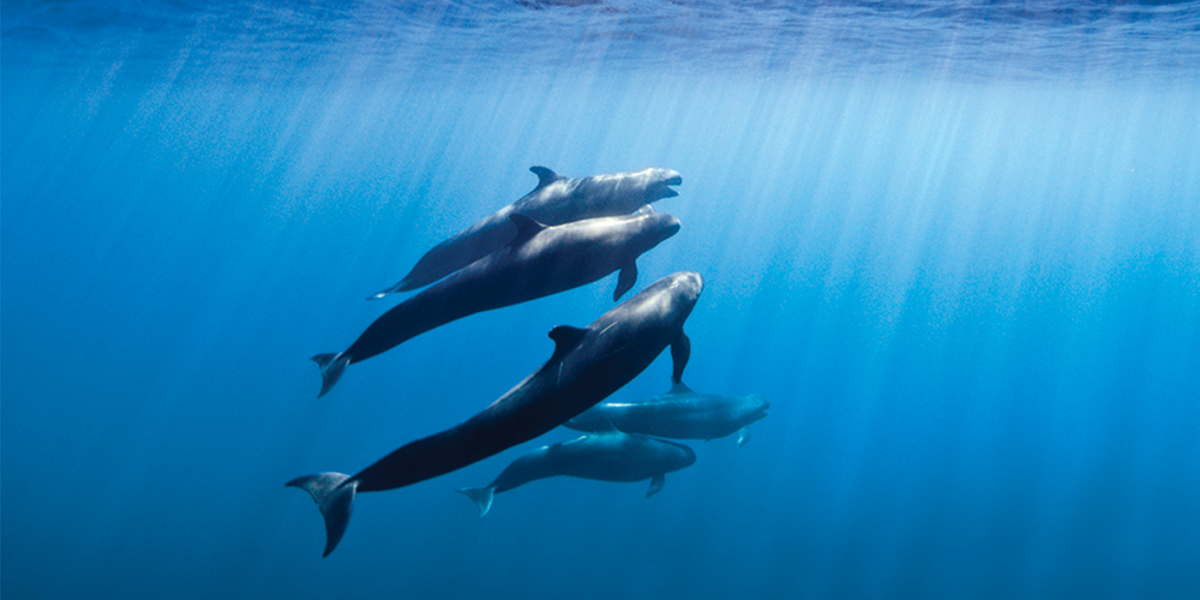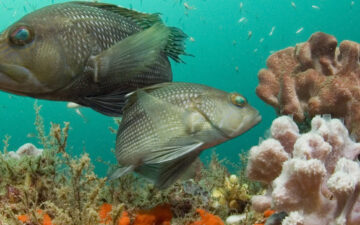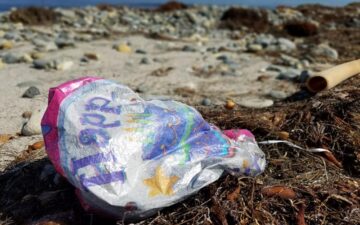The Earth rising in the distance in stark contrast to the moon. A polar bear stranded on a floating patch of ice. A pelican drenched in oil.
What do all of these images have in common? They have each served as a face for environmental movements.
Marine conservation’s biggest challenge? Lack of access to and understanding of what goes on underwater. Photography can remind us the reason we must all work to conserve what is beautiful.
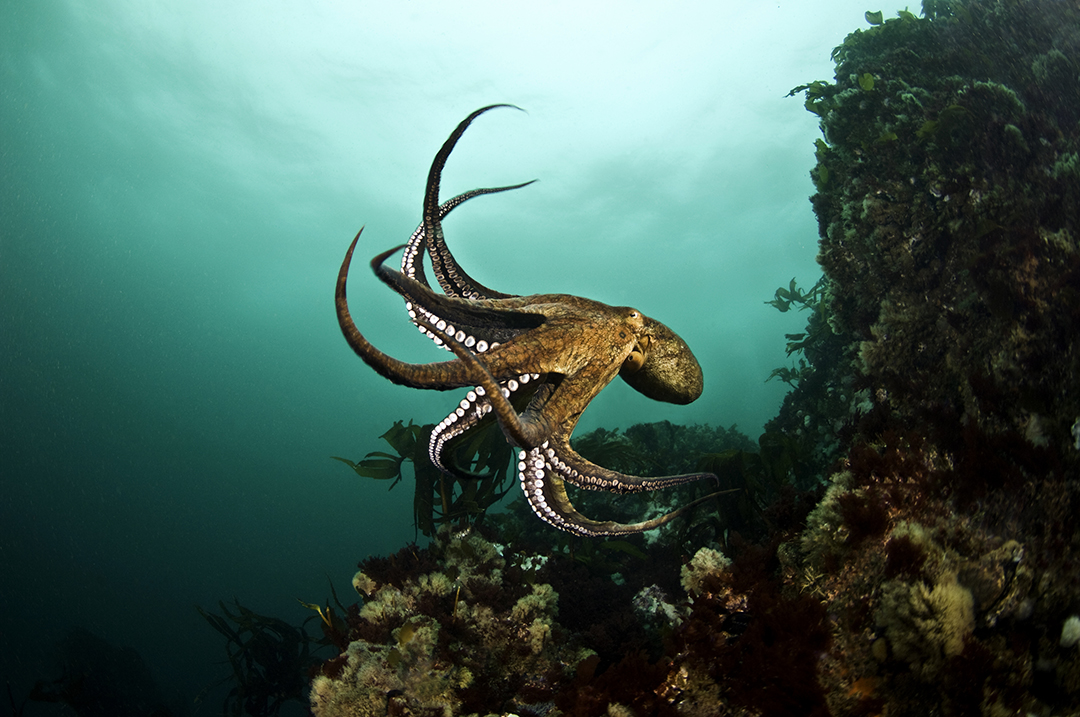
An octopus drifts at San Miguel Island. (c) Richard Salas
Talented photographers are critical to telling the story of what goes on beneath the surface and why we have to protect it.
I had the distinct pleasure of sitting down with friend, donor and underwater photographer, Richard Salas, this past week in Santa Barbara.
Salas started his photography career after a high school teacher pulled him aside and told him to get his act together. Something clicked, and he stopped “wasting time” and pursued his passion for photography.
It wasn’t until college that he starting going underwater, and he fell in love with the world below the surface.
After college, he pursued commercial photography for more than 30 years. His life was turned upside down when his lovely wife Rebecca (with whom I also had the pleasure to meet) was diagnosed with cancer in 2004. With her guidance he dove back into his long lost passion – underwater photography.
Richard Salas and his wife Rebecca, who helped him get back into the water.
Salas generously donates 50% of the book profits to The Ocean Foundation. Buy his books here.
————————————-
Favorite thing to photograph?
My very favorite critter to photograph is the Steller Sea Lion. They are 700 pound puppy dogs that never leave you alone. Their curiosity and playfulness is a joy and a challenge to capture while being pushed and grabbed the whole time. I love their facial expressions and huge inquisitive eyes.
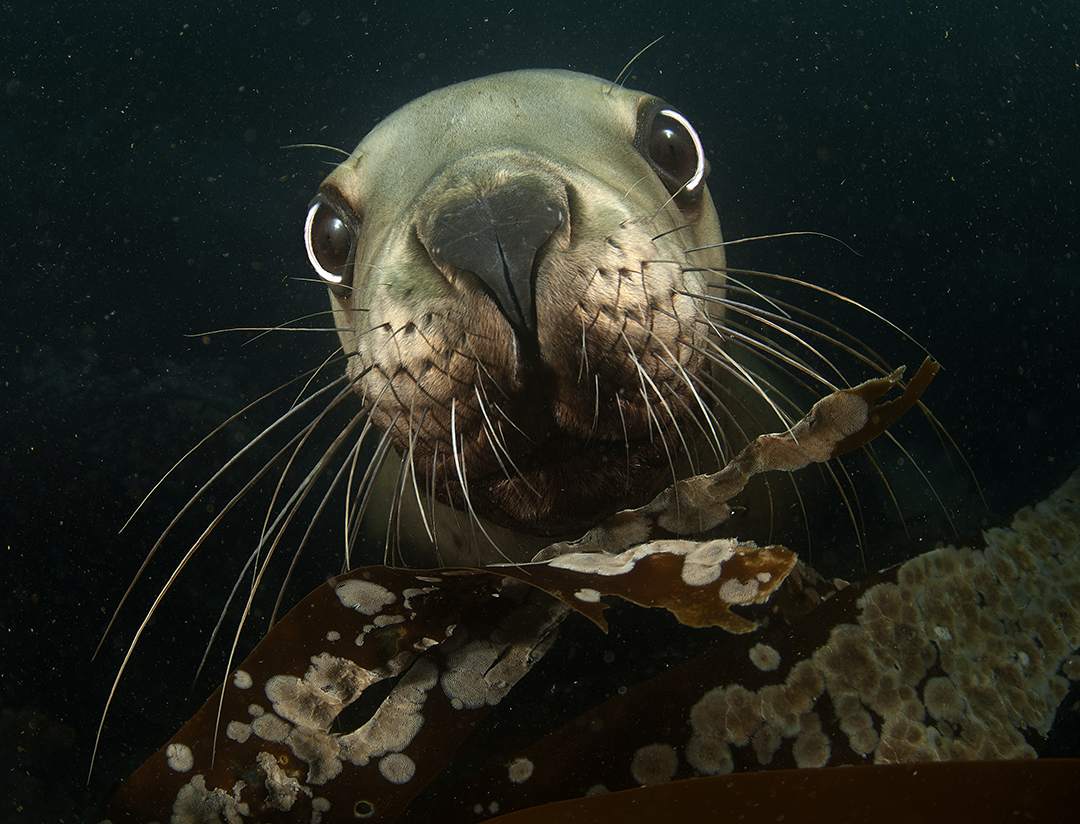
A playful stellar sea lion checks out the camera. (c) Richard Salas
What’s the most beautiful creature you’ve shot?
Manta rays are some of the most graceful animals I have ever had the honor to share the ocean with. Some are 18 feet across and 3600 pounds. They glide with the ease of Martha Graham dancing across the watery skies. Sometimes one has stopped to gaze into my eyes and it becomes a spiritual experience, a visual conversation from one species to another.
Any animal you haven’t seen yet that you are hoping to capture on camera?
I have yet to be with a humpback whale and look forward to that day with great anticipation and excitement. I have heard their songs and felt them vibrating through my body, which was pure joy to me. To be in the water with one of these beautiful giants and to get to photograph them is a lifetime dream.
What do you think makes a good photo?
Any image that evokes emotion from the viewer is a good one.
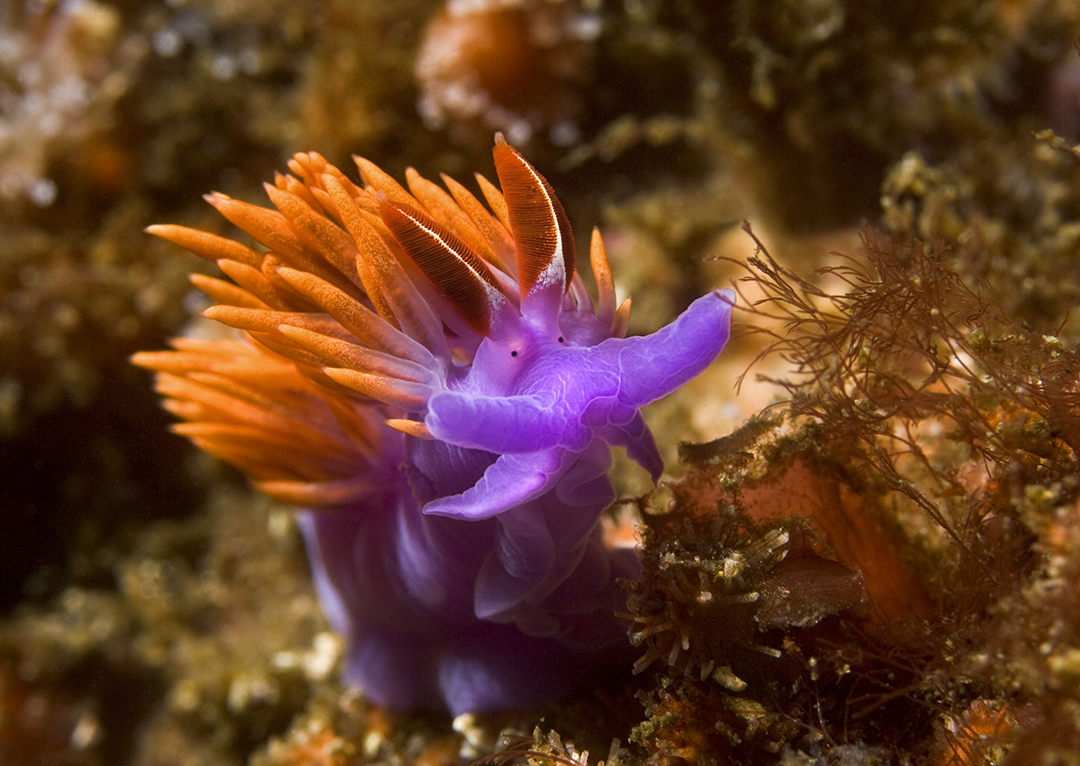
A Spanish shawl nudibranch, its name comes from its swimming style, which reminded scientists of the fringed shawls worn by flamenco dancers. (c) Richard Salas
If you could be any animal in the ocean which would you choose?
Do you see anything specific in the ocean that disturbs you?
Garbage always sends me into a mental tailspin, and animals with our trash stuck around their necks, legs, or fins. Seeing dive sites I used to dive on back in the 70’s now looking so void of life. The sight of dead sharks and other animals caught in discarded fishing nets.
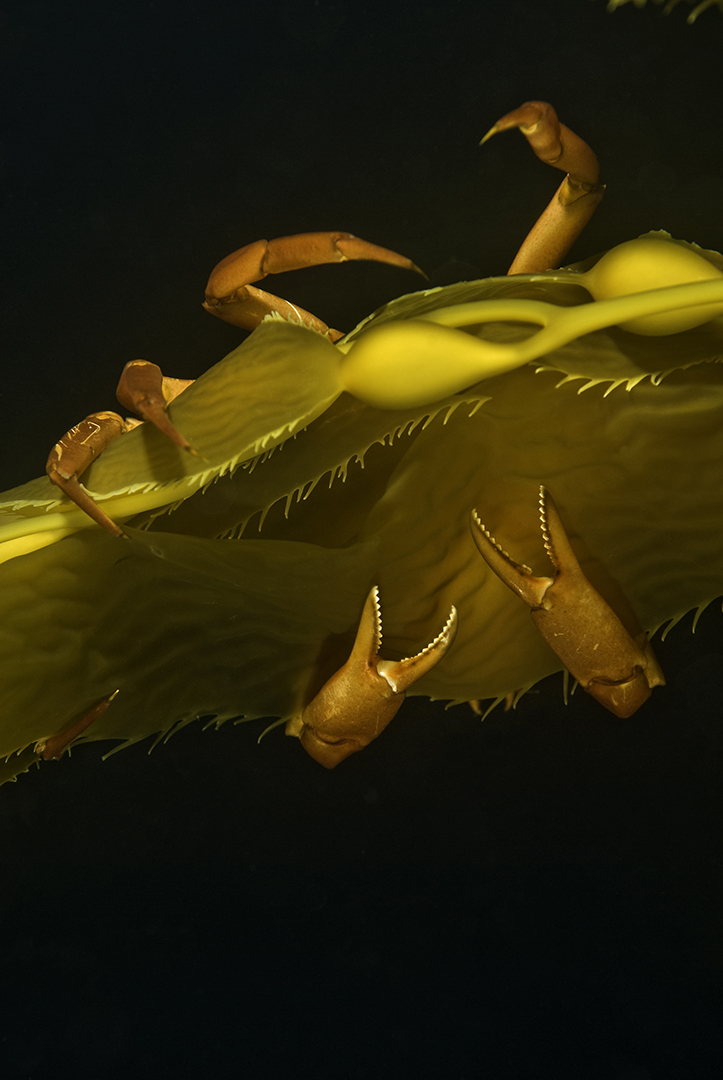
A camera shy crab hides behind a piece of kelp. (c) Richard Salas
Any dangerous situations? Any funny ones?
The only dangerous situation I have been in was finding myself at 90 feet below the surface adjusting my gear and all of a sudden being hit with the full body weight of another diver as he was sinking way too fast. We were both alright once I stopped his descent. My experience has been that the most dangerous animals underwater are humans.
The funniest situation is watching my son take off his fins and “run” around on the sandy bottom of the sea in slow motion. He looks like he’s bouncing on the moon, and seeing his playful ease and pure joy in being underwater always makes me laugh.
What are the challenges you face underwater versus taking photos on land?
I can’t breathe down there without bringing my own air supply, so I only get a certain amount of time to be down there and it always seems too short. Light falls off faster underwater, so I need to bring in more of it. Salt water and camera electronics definitely don’t mix. Keeping warm in 41 degree water is always a challenge, I can’t just go put on a sweatshirt. The places I like to dive are nutrient-rich and so full of life, but the downside is limited visibility, which is a constant challenge.
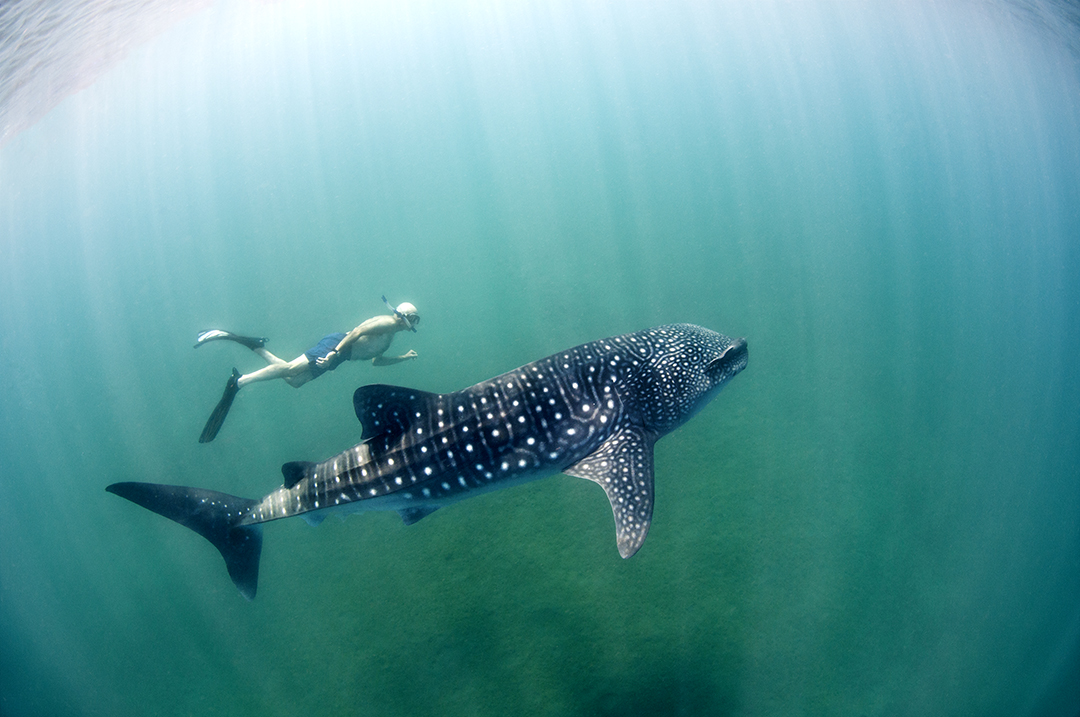
Diver swims next to a whale shark. (c) Richard Salas
